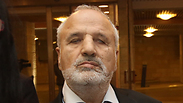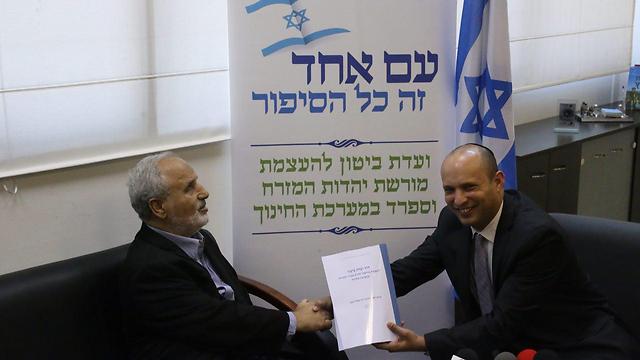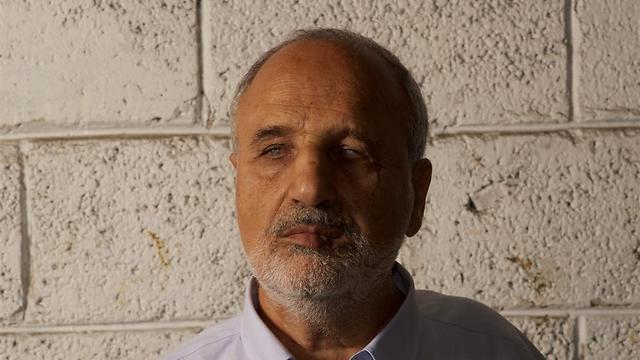
Commission recommends inclusion of Sephardic, Mizrahi Jewish history in school curriculum
Recommendations include taking students on school trips to Morocco, Spain and the Balkans; introducing topics relating to Sephardic and Mizrahi Jewry in history, literature and civics classes; and even establishing a Sephardic and Mizrahi Jewish Studies department at universities.
The Biton Commission, headed by poet Erez Biton, recommended to including questions about Sephardic and Mizrahi Jewish communities in the history matriculation exam; introducing a new major for high school students that will focus on Sephardic and Mizrahi Jews; introducing the issue of the kidnapped Yemeni children into the school curriculum; adding pieces by Sephardic and Mizrahi poets and other writers to the literature curriculum; taking students on trips to Balkan countries, Spain and Morocco; taking students on trips to graves of great Torah scholars; and having an equal representation of Sephardic/Mizrahi and Ashkenazi Jews in the Council for Higher Education in Israel.
Implementing the recommendations for all age groups in the education system is estimated to cost some NIS 500 million a year.

According to the commission, "the current curriculum has been written from a European point of view and only superficially incorporates the history of Sephardic and Mizrahi Jews, diminishing their part in the history of the people of Israel."
The commission recommended that another weekly hour of history lessons is added to high schools in which the students will learn the history of Sephardic and Mizrahi Jews. One of the topics the commission recommends to include in these history lessons is the Holocaust of the Jews of North Africa.
"The material on the Hassidic movement, for example, has a clear European focus," the commission wrote. "But it's also possible to point to later influences of the Hassidic Jews in Asia, Africa and the Sephardic Diaspora—from Chabad yeshivot in Morocco to Sephardic Jews joining Hassidic groups like Chabad and Braslev, or the use of the term 'Admor' (Hebrew initials for 'our master, teacher and rabbi' relating to a Hassidic leader —ed.) to describe figures like the Baba Sali."
Other topics the commission recommended to add to the curriculum are: Mashhadi Jews, the Damascus affair,the resettlement of Jews in Tiberias by Dom Joseph Nasi, the Golden Age of Safed in the 16th century, and other topics. The students will also learn about Rabbi Ovadia Yosef, Israel's fifth president Yitzhak Navon, and others.
In civics class, the commission recommended incorporating topics like the Wadi Salib riots, Israel's Black Panthers, the Yemenite Children Affair, the 2011 protest over the cost of living, and more.
"As part of civics class, students should discuss the reasons for the failure to integrate the immigrants in the 1950s," the commission noted.
In literature, the commission lamented the fact students could take their matriculation exam in the subject without learning even one Sephardic or Mizrahi piece of literature. Therefore, the commission recommends introducing creations by Sephardic and Mizrahi poets and authors to the curriculum of all age groups (pre-school to senior year in high school), including Erez Biton, Amira Hess, Shimon Adaf and Haviva Pedaya. In addition, the commission recommended to add the topic of "immigration poetry" to the curriculum in which students will have to learn five poems from a list of poets including Adi Keissar, Roy Hasan, and Shlomi Hatuka.
The commission also made recommendations regarding school trips. Among other places, the commission recommends that the students visit the Worldwide North Africa Jewish Heritage Center and the Babylonian Jewry Heritage Museum, as well as take a class trip to Tiberias that includes a visit to the grave of the Rambam and the spot reserved for spy Eli Cohen, who was hanged in Syria after being caught.
The commission also recommends trips to the graves of great Torah scholars, saying "an emphasis must be put on the values and ideas these figures represented in their lives and writing."
Students should also visit development towns in the periphery, moshavs and cities that were centers of Jewish thought.
In higher education, the commission recommends establishing a department for Sephardic and Mizrahi Jewish Studies within the Humanities Faculty. The department will include courses in history, literature and philosophy. Outside the department, a third of mandatory and elective courses for Humanities students will be dedicated to the Sephardic and Mizrahi Diaspora, and students who are not in the Humanities Faculty will have to take at least one mandatory course on the subject.
In addition, an annual scholarship of NIS 30,000 will be given to any PhD student who studies the Sephardic and Mizrahi Diaspora.
The commission recommended a third of the history courses at colleges of education to be dedicated to Jews from the Sephardic Diaspora, Muslim countries, Asia and Africa. In addition, every future teacher, particularly future history teachers, will have to take university courses on the history of Sephardic and Mizrahi Jews from the 17th to the 20th century and their culture. This will be a requirement for their teacher certification.
In the world of television, the commission recommended to produce a 12-episode educational show dealing with the cultural contribution of Sephardic and Mizrahi Jews. The show will discuss the history of the Jews living in Muslim countries in modern times, the influence of the Jewish-Arab conflict in the Land of Israel, Zionism, dispersed communities, renewed identities, and more.
More recommendations include the establishment of museums focusing on different Sephardic and Mizrahi communities and the immortalization of different Sephardic and Mizrahi figures at schools, in street names, etc. In addition, November 30 should be dedicated in the education system to the exodus of Jews from Arab and Muslim countries by taking students on trips to museums and organizing other activities.











